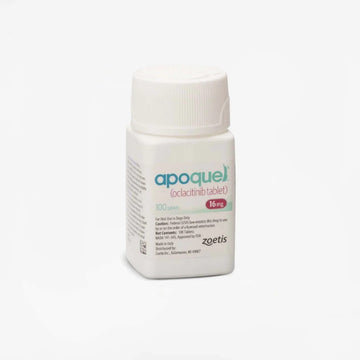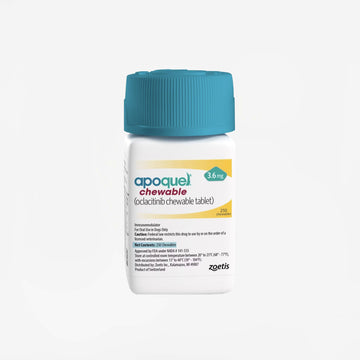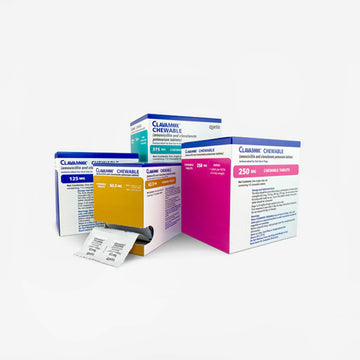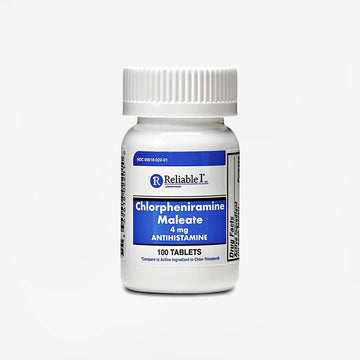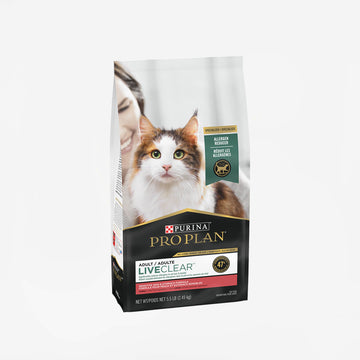Treat your cat's allergies from home with online vet care
Don't waste time or money waiting to see a vet. Get your cat's allergy medication with a 10-minute video call.
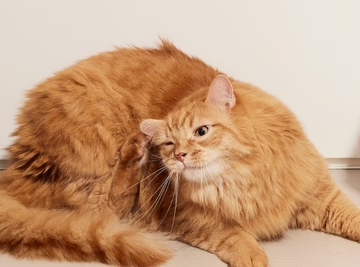
- Unlimited vet visits and follow-ups
- Prescriptions delivered free to you
- Our vets can treat 93% of allergy issues

How to spot cat skin issues?
Even though cats can’t talk, their behaviors tell us when there’s an issue


Itching (the most common sign)
Itching (the most common sign)
Cats shouldn't spend a lot of their day itching when they could be napping instead. While certain medications can temporarily stop the itch, our team of veterinarians will work with you to get to the root cause of the issue for long term relief.
Skin and/or ear infection
Skin and/or ear infection
Most allergy medications deal with your pet’s inflamed skin or ear infections, but never address the underlying issues. At Dutch, we want you to fully understand what’s going on with your furry friends, whether it’s inflamed skin or recurring ear infections, which is why our plans combine medication and over-the-counter therapeutics to get to the root cause of the allergy, as well as, relieve symptoms and prevent future issues from popping up.
Excessive grooming or licking
Excessive grooming or licking
If your cat is excessively licking (usually their paws) and grooming themselves, it could be a sign that they’re trying to relieve itchiness caused by allergies. We can help put an end to their excessive licking, which might be the result of atopic dermatitis, caused by either food-related or environmental allergies.
Digestive issues
Digestive issues
Can’t explain your cat’s most recent bout of vomiting and diarrhea? If a visit to the vet has ruled out other causes (like illnesses or parasites), allergies could be the underlying cause. Gastrointestinal issues can be a sign that your cat is allergic to something in their food, and we can help you figure out what it is. We’ve partnered with seasoned vets and allergists who we work closely with to discover the latest in scientific research when it comes to giving your pet the best life possible. And of course, food plays a major role in your furry companion living their best life. (Just ask your cat.)

Customized care for your cat’s allergies
Connect with a vet and get a treatment plan to help your cat feel better — quickly and affordably from home.

Gooses’s flea & tick plan
-
Symptoms
Scabs, crusts, hair loss
-
Your Plan
Antibiotics, flea & tick medication
How Dutch works
-
Pick a plan and become a member
-
Schedule a video call with a licensed vet
-
Order the prescriptions the vet recommends
Frequently asked questions
What can I use Dutch for?
What can I use Dutch for?
With Dutch, you’re never alone when it comes to your pet’s health. Whether your pet needs care or you just have a question, our compassionate and knowledgeable vets are always happy to help.
Here are some ways you can use Dutch:
- Care & prescriptions for over 150 issues
- Behavioral health, nutrition, and exercise advice
- Puppy, kitten, and new pet parent advice
- Preventive care plans
- Night and weekend vet care
- Second opinions & follow-up care after in-person visits
- Advice on whether you need to go to the ER or urgent care
- Vet care when you’re traveling
- Easy prescription refills
- Longevity treatment plans
- Answers to non-urgent questions
What is a visit with Dutch like?
What is a visit with Dutch like?
When booking a video call with a vet, you'll be asked a few questions about your pet’s health issue. Depending on the issue, you may also be asked to fill out a longer questionnaire about their symptoms and share photographs of them so our veterinarians can better understand what’s going on. You’ll then pick an appointment time that works best for you.
During your video call, one of our licensed veterinarians will talk to you about the symptoms your pet is experiencing, ask you questions, review your pet’s medical history if you’ve provided it, and answer any questions you have. The vet will ask to see your pet and their environment. And they may ask you to perform some simple checks on them if needed.
After your video call, the vet will send you a message with a custom treatment plan to help your pet feel better, including a link to buy any recommended prescription or over-the-counter medications. Place your order and we’ll ship it free.
How do I know if you can treat my pet?
How do I know if you can treat my pet?
Our vets can provide care and prescriptions for more than 150 issues — and over 90% of cases can be treated virtually.
The vet can diagnose your pet based on your description of their symptoms, their medical history, seeing them during your video call, and, if needed, through uploaded photos and videos. They may ask you to do a few simple checks during the call. We also offer a number of at-home lab test kits for dogs and cats.
The health and safety of pets is our top priority. In the rare case that a vet determines a pet needs to go to a local clinic, they’ll provide a referral and offer advice on how to care for them until they can be seen.
Some things that require in-person care include emergencies, wounds that need stitches, and issues that require blood work, imaging (X-rays or ultrasounds), or surgery.
Our vets are always available for second opinions and follow-up care after in-person vet visits — so you don’t have to navigate health issues alone.
How much will it cost for Dutch to treat my pet?
How much will it cost for Dutch to treat my pet?
Our memberships are designed to make your pet’s care as easy and affordable as possible. Here’s how your costs will break down:
Membership: You can choose to pay the total price upfront or in 4 installments. All memberships include unlimited care for up to 5 pets at no extra cost.
Vet calls and messaging: No cost — video chat and message with vets as often as you need for free.
Medication: The price will vary depending on your pet’s needs. To keep your costs down, we offer a price-match guarantee, free standard shipping, $25 off your first product order, and 20% off your first flea & tick order.
How does Dutch pet allergy treatment work?
How does Dutch pet allergy treatment work?
Based on the results of the online consultation and the diagnosis made, the Dutch-affiliated veterinarian will recommend certain medications and therapies to stop the itch and improve the overall health of the skin. The goal is to prevent further trauma to the skin in the short term by allowing it to heal, then preventing itch in the long term by getting to the root cause of the problem that is driving the itch response.
